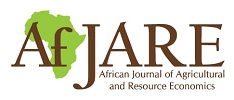Influence of agricultural extension services on technical efficiency of maize farmers in Malawi
Recognising potential selection bias due to non-randomness of the data, this study used propensity score matching on data from a nationally representative fifth Integrated Household Survey (IHS5) to investigate the effect of agriculture extension services on the technical efficiency of maize farmers in Malawi.
